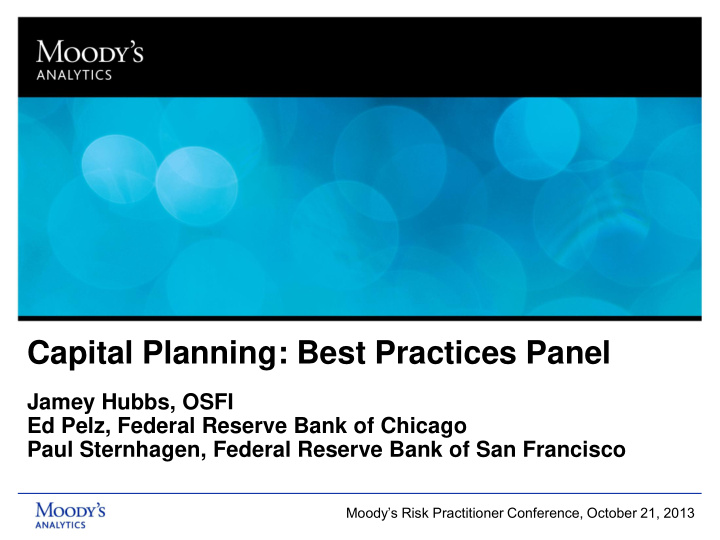



Capital Planning: Best Practices Panel Jamey Hubbs, OSFI Ed Pelz, Federal Reserve Bank of Chicago Paul Sternhagen, Federal Reserve Bank of San Francisco Moody’s Risk Practitioner Conference, October 21, 2013
Seven Principles of an Effective Capital Adequacy Process 1. Sound foundational risk management • Sound infrastructure • Systematic and repeatable material risk identification process 2. Effective loss estimation methodologies • Process to translate risk measures into potential losses • Implementable for range of stressed scenarios • Ability to aggregate losses across BHC 3. Solid resource estimation methodologies • Clear definition of available capital resources • Process to estimate available resources over same range of scenarios 4. Sufficient capital adequacy impact assessment • Impact of loss and resource aggregation on capital adequacy • Compare to BHC capital goals 2
Seven Principles of an Effective Capital Adequacy Process 5. Comprehensive capital policy and capital planning • Capital goals and appropriate capital levels • Composition of capital • Capital actions 6. Robust internal controls • Policies and procedures • Model validation and independent review • Comprehensive documentation 7. Effective governance • Board and senior management oversight • High level of engagement including effective challenge process 3
Recommend
More recommend